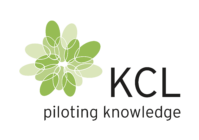Have you ever thought about how flame treatment could transform your extrusion coating process? It’s a fascinating technique that can really boost the quality and performance of your coated materials. By exposing the surface of a substrate to a controlled flame, we can tweak its properties to improve adhesion and coating efficiency. Imagine achieving superior surface adhesion, increased coating efficiency, cost savings, and even environmental benefits—all thanks to flame treatment. But that’s not all. Like any technology, it comes with its own set of challenges. Let’s dive into the details and see why flame treatment is such a valuable tool in extrusion coating.
How does flame treatment enhance surface adhesion?
Flame treatment is like a secret weapon for enhancing surface adhesion in extrusion coating. It works by oxidizing the surface of the substrate, which boosts its surface energy. Why is this important? Because it allows the coating material to spread more evenly and stick more firmly to the substrate. The result? A much stronger bond between the coating and the substrate, reducing the risk of delamination and making the final product more durable.
But wait, there’s more! Flame treatment also cleans the substrate surface by getting rid of pesky contaminants like dust, oils, and other residues. These can be real barriers to adhesion, so removing them is key to achieving a strong bond. By ensuring a clean and activated surface, flame treatment helps the substrate and coating material interact better, leading to improved adhesion.
At KCL, we totally get how crucial surface adhesion is for the performance of coated materials. Our advanced flame treatment technology is all about optimizing surface preparation, so you can achieve the best possible results in your extrusion coating applications.
What is the role of flame treatment in improving coating efficiency?
Think about this: flame treatment is a game-changer when it comes to enhancing coating efficiency. By prepping the substrate surface for optimal coating application, it increases surface energy and cleans the substrate. This ensures that the coating material spreads uniformly and adheres effectively. And that uniformity? It’s crucial for achieving consistent coating thickness and quality, which are key factors in coating efficiency.
Plus, flame treatment can actually reduce the amount of coating material you need to get the desired properties. With better adhesion and uniformity, you can apply thinner coatings without sacrificing performance. This not only boosts coating efficiency but also saves on materials and cuts costs.
At KCL, we’re all about helping you maximize your coating efficiency. Our state-of-the-art equipment and processes are designed to deliver consistent and reliable results, so you can hit your production goals with greater efficiency and effectiveness.
How does flame treatment contribute to cost savings?
Flame treatment is a fantastic way to save costs in extrusion coating by cutting down on material waste and boosting production efficiency. By enhancing surface adhesion and coating uniformity, it minimizes the risk of defects like delamination and uneven coating, which can lead to costly rework or scrap. Fewer defects mean lower production costs and higher profitability.
And here’s the kicker: the improved adhesion from flame treatment lets you use less coating material while still meeting performance requirements. This not only slashes material costs but also reduces the environmental impact of the production process.
At KCL, we’re committed to helping you achieve cost savings through innovative solutions like flame treatment. Our comprehensive approach to extrusion coating ensures you benefit from both improved performance and reduced costs, making your operations more competitive and sustainable.
What are the environmental benefits of using flame treatment?
Flame treatment offers some pretty exciting environmental benefits, making it an attractive option for extrusion coating. One of the biggest advantages? It cuts down on chemical usage. Unlike some other surface treatment methods, flame treatment doesn’t require solvents or other chemicals that can harm the environment. This makes it a more sustainable choice for manufacturers looking to shrink their environmental footprint.
Plus, the improved adhesion and coating efficiency from flame treatment can lead to reduced material usage and waste. By enabling thinner coatings and reducing defects, it helps conserve resources and cut down on waste during production.
At KCL, we’re all about promoting sustainable practices in the bioeconomy. Our flame treatment technology is designed to support your environmental goals by providing a cleaner, more efficient surface treatment solution that aligns with your sustainability objectives.
Are there any limitations or challenges with flame treatment?
Now, let’s talk about the flip side. While flame treatment offers numerous advantages, it’s not without its challenges. One of the main limitations is the need for precise control of the flame parameters. The temperature, intensity, and duration of the flame must be carefully managed to ensure optimal results. If not, you might end up with inconsistent treatment, which can affect adhesion and coating quality.
Another challenge is the potential for substrate damage. Some materials might be sensitive to high temperatures, and exposure to the flame can cause warping or other forms of damage. It’s crucial to select the right treatment parameters and equipment to avoid these issues.
At KCL, we understand the importance of tackling these challenges to ensure the success of your extrusion coating projects. Our team of experts works closely with you to develop customized solutions that meet your specific needs, ensuring you can fully leverage the benefits of flame treatment while mitigating potential risks.
